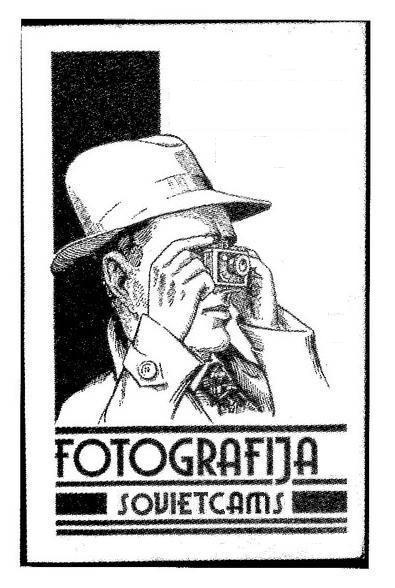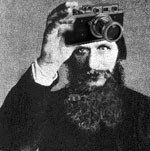| Author |
 Topic Topic  |
|

Aidas Pikiotas
AidasCams
Lithuania
973 Posts
My Collection
|
|

Bill Parkinson
nightphoto
USA
1027 Posts
My Collection
|
 Posted - Nov 28 2007 : 6:43:41 PM Posted - Nov 28 2007 : 6:43:41 PM



|
These factory stamps have been for sale on Ebay for almost two years and were offered to me by this same seller just before or when they were first put on Ebay. This is what stamps look like for many of the commemorative cameras from FED and KMZ. Many books say "silkscreened", but they are not... they are stamped.
Nothing new here, just more stuff that was taken home by the FED employees when the camera department closed, and shortly after... just like the FED-6TTLs that were put on Ebay.
These stamps would be good for a collection, but the price is much too high and all of the collectors who would be interested in them have already seen them and not bought them. If the price were much lower, there are several who would be interested.
Regards, Bill
|
 |
|
okynek
759 Posts |
 Posted - Nov 28 2007 : 9:45:35 PM Posted - Nov 28 2007 : 9:45:35 PM


|
| How pictures were made from these stamps? The normally stamps are in reverse (mirror image). And all this stamps looks all right. |
 |
|
Luiz Paracampo
Luiz Paracampo
Brazil
1981 Posts
My Collection
|
 Posted - Nov 28 2007 : 10:01:18 PM Posted - Nov 28 2007 : 10:01:18 PM



|
These are printed blocks or photos are reversed?
In case of stamps, they should also have the surface form of the camera top (slightly curved?) |
 |
|

Bill Parkinson
nightphoto
USA
1027 Posts
My Collection
|
 Posted - Nov 28 2007 : 10:19:37 PM Posted - Nov 28 2007 : 10:19:37 PM



|
I think that these are actually the plates that get inked, then they wipe the extra ink from the surface so that it is only in the recessed areas of the letters, then these inked plates are printed (pressed) onto a piece of plastic or paper, which is then pressed against the cameras. So in effect, a transfer, intaglio process. That is how they deal with curved surfaces as well. And that is how they are not looking reversed. The paper or plastic they print on comes out reversed and when that is then pressed to the camera, it is the right way again.
So, in other words, these plates are not pressed directly on the cameras, they are used to print on plastic or paper which is then pressed on the camera while the ink is still wet (oil enamels).
Regards, Bill
|
 |
|

Bill Parkinson
nightphoto
USA
1027 Posts
My Collection
|
 Posted - Nov 28 2007 : 10:26:56 PM Posted - Nov 28 2007 : 10:26:56 PM



|
And, I would add that the metal plates themselves are made using a photo of the original art (done on artist's board with ink) that is projected onto the metal blocks which are covered with a photo-sensitive resist ground. When the exposure has been made, they are processed and the areas of the black part of the design is washed away. Then the plate is etched with acid. When the correct depth is reached, they stop the acid and wash the rest of the ground away, leaving the plate as you see it, with an etched-into design of the art.
Regards, Bill
|
Edited by - nightphoto on Nov 28 2007 10:27:30 PM |
 |
|
okynek
759 Posts |
 Posted - Nov 28 2007 : 10:44:20 PM Posted - Nov 28 2007 : 10:44:20 PM


|
| Makes sense. Silk screening seems to be easier solution though. I guess FED decide against it by some reasons. |
 |
|

Vladislav Kern
Vlad
USA
4247 Posts
My Collection
|
 Posted - Nov 28 2007 : 11:56:55 PM Posted - Nov 28 2007 : 11:56:55 PM



|
For mechanically challenged (like myself), would you care to explain what is silk screening? Is this when they spray paint through a mask?
Thanks,
Vlad. |
 |
|

Bill Parkinson
nightphoto
USA
1027 Posts
My Collection
|
 Posted - Nov 29 2007 : 12:19:44 AM Posted - Nov 29 2007 : 12:19:44 AM



|
Silk screening is actually not easier in all cases, especially when the design is somewhat small and detailed. Also the resist that is forming the design on the screen tends to break down fairly quickly, leaving a ragged line after maybe 100 impressions or so. Silk screening is better for larger designs where the ragged lines won't be so apparent.
For Vlad and others, silk-screening is a printing process where a very fine and evenly-woven piece of silk is stretched on a wood or metal frame. Then a method of blocking, or "resisting" ink that will be pushed through the silk onto the thing that will get the design, is put onto the silk. The "resist" can be made by cutting a stencil from plastic "nu-film" and adhering it onto the silk with solvents, or the "resist" can be a type that is painted on (called "tusche"), or it can be a type of photo-resist. In the case of something like these logos, probably a "nu-film stencil, or photo-resist would be used. When the screen is finished and the design in place, the screen is laid down onto the object, ink is put at on end of the screen, and a thing like a rubber blade (squeegee) pulls the ink across the screen, pushing it through in the places where there is no resist. So depending on the hardness of the resist, it starts to break down. In big industrial uses they deal with this by using harder resists and also making multiple screens so that it can be replaced when it starts to wear.
Regards, Bill
|
 |
|
BERRY alain
mermoz37
France
814 Posts |
 Posted - Nov 29 2007 : 08:02:11 AM Posted - Nov 29 2007 : 08:02:11 AM


|
Bil,
you are right in printing technology ,
i have friends whom work is to make such a process for advertising novelties like pencils, lighters, miniatures cars etc...
name of this process in French is "tampographie".
it is a quick and cheap process very convenient for curves surfaces ...
alain |
 |
|
okynek
759 Posts |
 Posted - Nov 29 2007 : 09:34:53 AM Posted - Nov 29 2007 : 09:34:53 AM


|
General principle of silk screening could be find on Web sides like this:
http://www.silkscreenbiz.com/silkscreen3.htm
Silk screening is easy, very technological and cheap method what provided very good results. This method often used to make PCB(printed curcus boards).
FED choose more expensive and less technological stamping process possibly because this pictures was made on already assembled cameras. Silk screening on assembled cameras will be hard and messy indeed. Possible to bust sale of this camera during Perestroika, FED decided to open cameras what was stock in warehouses and stamped them. I believe we had thread about FED-5 problems earlier?
If you look on this prints with magnified glass, or even without it  , you can see that quality of the pictures is not as good as on others commemorative cameras, while FED-5 made much later. Stamps only have black color and not as fine as let say 50-years of Soviet Power pictures. And on mine camera picture is not exactly horizontal , you can see that quality of the pictures is not as good as on others commemorative cameras, while FED-5 made much later. Stamps only have black color and not as fine as let say 50-years of Soviet Power pictures. And on mine camera picture is not exactly horizontal . So they most likely made by hands later, “after market” so to say. . So they most likely made by hands later, “after market” so to say. |
 |
|
| |
 Topic Topic  |
|
